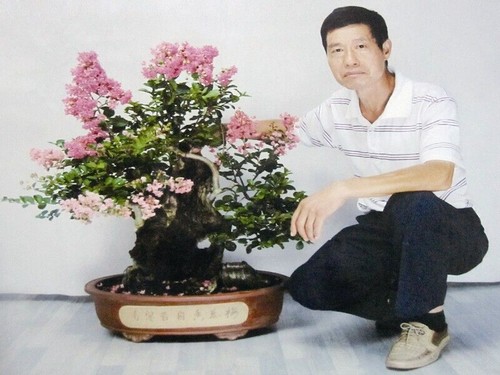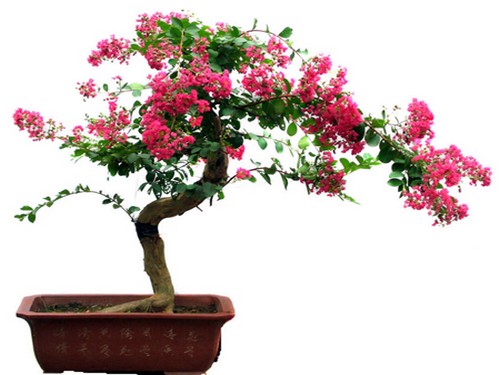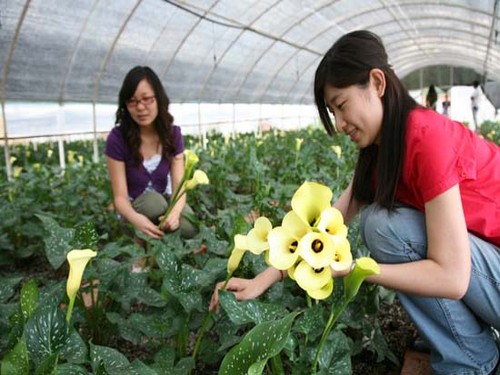Seedling raising method of crape myrtle bonsai
Each kind of flower is blooming its own beauty, each leading a coquettish side. Like crape myrtle, it avoids the spring when a hundred flowers compete for beauty and chooses to bloom in summer and autumn. It has beautiful trees, buckled branches and colorful flowers, so it is worth watching.

Crape myrtle has many kinds and different postures. Because it is easy to manage, the branches are soft, grafting or simple binding is easy to heal, so it can be shaped into various shapes according to individual needs, some are twisted, some are light and colorful; some are straight, the branches are high, and the branches are drooping; some dwarf varieties with extremely short plant types are used as edge plants in flower borders, roadsides, flower beds and other landscapes. Creeping branches are conducive to the formation of large areas of color, which can be used in landscape colors that need to be formed.
Crape myrtle also has the characteristics of dense leaves and twigs, thick stems and dewy roots, which is easy to climb, so it is suitable for bonsai, pile scenery and so on, while some old piles are excellent materials for bonsai. Crape myrtle flowers can also be cut into cut flowers, and the vase time is longer than other flowers. Crape myrtle not only decorates the human garden, but also brings people visual and psychological enjoyment.
1. Breeding of pile head of crape myrtle bonsai
Because the original provenance of crape myrtle is very rich, with smooth and ruddy trunk, simple and natural, vigorous and powerful varieties of crape myrtle, generally more common in central China. If you use it to make bonsai, there are three major shortcomings: first, the growth of branches is not easy to control; second, the leaf is too large; third, the flower is small, the shape is not beautiful, the color is not bright. In late autumn and early winter, all kinds of crape myrtle with basic conditions of bonsai can be selected for variety improvement and grafting.
This method is simple and easy, and the survival rate is particularly high, giving full play to these crape myrtle in the wild through the miraculous craftsmanship of nature, forming an ever-changing, coarse and simple natural charm. The crape myrtle bonsai in the picture sent by this blog is cultivated by grafting. At the same time, crape myrtle varieties with bonsai conditions can also be selected to make bonsai directly or to change species by grafting. Its characteristics make full use of the stump of the original species, the stump is thick and curved, and the tree shape is graceful. After the grafting combination of modern fine varieties, the tree shape is compact, the branches are short and the leaves are small, and the flowers are beautiful, shaped like blossoming clouds, graceful and full of flowers. It's a feast for the eyes.
2. Seedling cultivation
The gardening varieties of crape myrtle with short and dense internodes, small leaves, easy flowering, colorful flowers, long flowering period and strong adaptability were selected to cultivate young seedlings and tie up and prune according to bonsai modeling techniques.
3. Grafting and changing species:
Crape myrtle root system is well developed, after root cutting, it is extremely easy to produce new roots, and it is easy to survive in the pot. When the ideal crape myrtle pile head is obtained, it should be cut and pruned according to the needs of bonsai modeling. if the pile head with better root system can be planted in the pot directly, the thicker branches can be cultivated to facilitate the survival of grafting.
Grafting time: generally used to be carried out before germination in spring, in fact, different grafting methods can be used, grafting can be carried out all the year round, and multiple supplementary grafting can be carried out according to the survival of grafting. The general survival rate is about 98%.
Time: 2019-06-12 Click:
- Prev

Propagation method of crape myrtle bonsai
Crape myrtle trees have beautiful appearance, bright trunks, bright flowers and long flowering period. they can last for more than a hundred days in summer and autumn. they can be used for landscaping of courtyards, parks and green spaces, as well as potted plants. Crape myrtle is sunny, slightly shade-tolerant, drought-resistant, waterlogging-resistant, pruning-resistant and tillering-resistant. It also grows well on lime soil.
- Next

Propagation technique of potted calla
Colored calla lilies are now usually sold as single pots or pots of high-grade potted flowers. if the technical problems are solved, colored calla lilies still have some room for development in the small potted market in the future. Jinzhou ball has the advantages of many flowers and strong disease resistance, so it is more suitable for producing small potted products with a pot diameter of 12 cm to 14 cm.
Related
- Fuxing push coffee new agricultural production and marketing class: lack of small-scale processing plants
- Jujube rice field leisure farm deep ploughing Yilan for five years to create a space for organic food and play
- Nongyu Farm-A trial of organic papaya for brave women with advanced technology
- Four points for attention in the prevention and control of diseases and insect pests of edible fungi
- How to add nutrient solution to Edible Fungi
- Is there any good way to control edible fungus mites?
- Open Inoculation Technology of Edible Fungi
- Is there any clever way to use fertilizer for edible fungus in winter?
- What agents are used to kill the pathogens of edible fungi in the mushroom shed?
- Rapid drying of Edible Fungi

